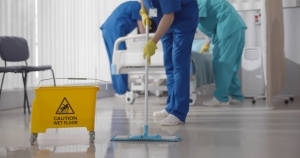 Once you articulate a global way of doing things (your Service Theme or True North) you need to localize it by department. If your team does not feel the overarching statement is appropriate, relevant, and authentic to them and their department, it will not help connect them to a purpose. The more you localize it by department, the more ownership people feel. There is power and alignment in a global statement, but real authenticity comes when it is localized.
Once you articulate a global way of doing things (your Service Theme or True North) you need to localize it by department. If your team does not feel the overarching statement is appropriate, relevant, and authentic to them and their department, it will not help connect them to a purpose. The more you localize it by department, the more ownership people feel. There is power and alignment in a global statement, but real authenticity comes when it is localized.
Localize Your Global Service Theme/True North
Everyone at Walt Disney World follows the same global service theme, which is “We create happiness by providing the finest in entertainment for people of all ages, everywhere.” Most cast members just remember and recite the first three words as a simple way of keeping the purpose in their minds at all times. However, many divisions of the organization “localize” the theme to make it more relevant and authentic to their specific division.
For example, at the Disney Vacation Club (vacation timeshare program), “We create happiness by allowing you to own a piece of the magic.” At Disney transportation (buses, monorails, trains) they say, “We create happiness by keeping the magic moving.” At Disney laundry services (supporting the world’s largest working wardrobe),“We create happiness by the keeping the magic squeaky clean.” At the Disney Institute it’s, “We create happiness by allowing you to discover the business behind the magic.”
Knowing the mission is just the first step. If employees don’t know the why, the what doesn’t matter, especially with the millennial generation. Employees need to understand how the work they do contributes to the bigger picture.
I was a consultant in one hospital where the sterile processing department team did not see their purpose. They only saw their job tasks. They actually saw themselves as “glorified dishwashers.”
So I asked them, “Do you realize without you sterilizing these instruments and fully assembling them exactly right into a surgical kit, patients could die?” Their response was, “I never really thought of it that way. And our managers have never really told it to us that way.” And then I asked something that really blew their minds. “Have you ever seen your surgical kit in action in the operating room?” The unanimous answer was no. To me, this is like the seamstress who creates amazing costumes for the theater but never actually sees the show. It’s like the animator who does the background animation for The Little Mermaid without ever seeing the movie.
So I asked, “Would you like to see your instruments being used in surgery?” And 80% of them said yes. So we started a monthly surgical shadowing program. Sterile processing team members would get to see a surgery of the surgical kit they themselves cleaned and assembled, and the quid quo pro was they had to come back to their team to tell their coworkers how their clean surgical kits were used to save a child’s life, or were used in a hip replacement. Out of that, the team came up with their own localized departmental service theme, “We provide tools that save lives.”
Where would you rather work — in a place where you feel like a glorified dishwasher, or in a place where everyone feels like they clean and assemble surgical tools that save lives?
For the complete lesson on how to Localize Your Culture, check out our virtual 99 lessons.





